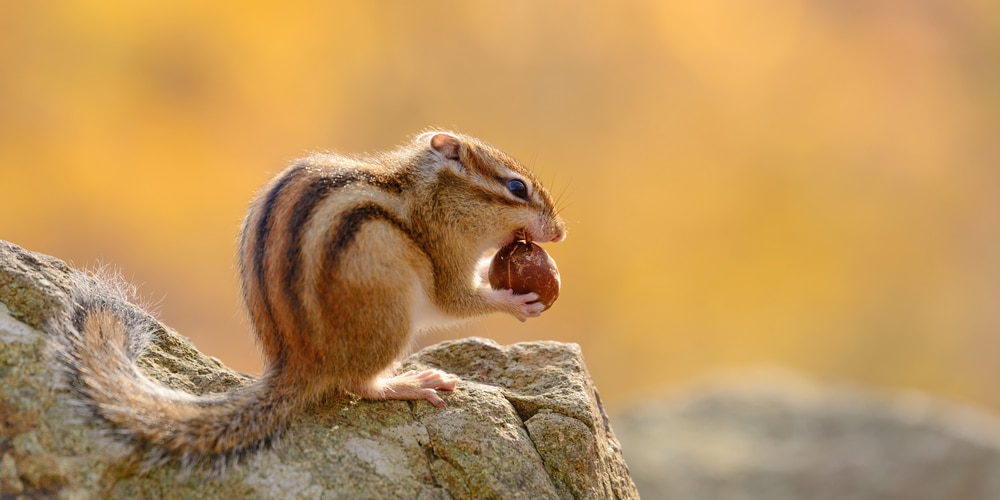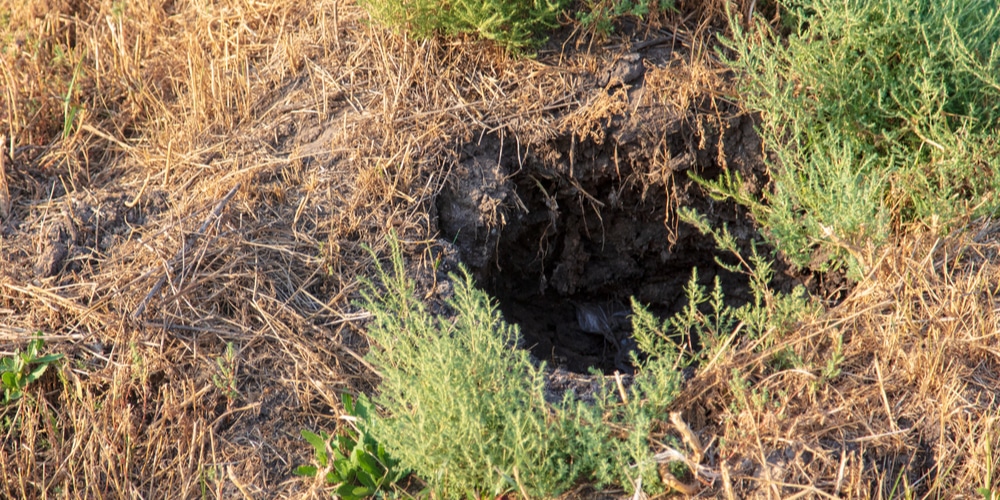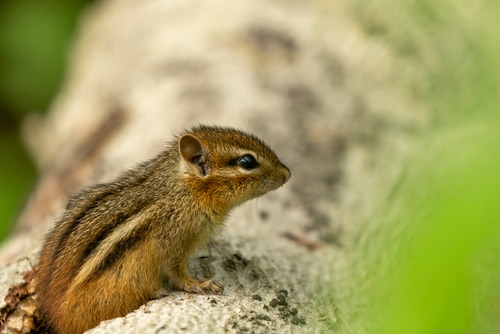Chipmunks are cute, but every gardener knows how troublesome they can get. Indeed, these destructive animals are always searching for shelter and comfort, which they find underground. For your garden or home, this means having to deal with extensive burrow systems in your yard, especially if the area is attractive to them.
If you are like most people (who haven’t had an experience with chipmunks), you might be thinking that spotting their tunnels will be simple. However, these animals tend to build their diggings without leaving any dirt at the entrance or exit hole, making it complicated to identify them. Still, if you want to avoid severe damage, you will have to take care of chipmunks’ diggings as soon as you can. Indeed, they will not only destroy your yard but also devour everything they found, from bulbs to plants and even some beneficial insects.
The good news is that it is possible to take (ethical) action to discourage chipmunks from attacking your garden. One of them is to fill their tunnels. In this essential guide, you’ll learn about how to fill in a chipmunk hole, how to deter them from getting into your property, and much more. Keep reading to discover our tips for dealing with these cute but destructive little animals.
How to Fill in a Chipmunk Hole: Find the Holes and Assess the Damage
For starters, you will have to find the entrance and exit of the diggings. As mentioned, you don’t have to look for piles of dirt. Instead, the openings chipmunks create are small: usually between two or three inches in diameter. To spot them, you should look underneath stones, woodpiles, and logs, which chipmunks seem to appreciate. In general, any place that can act as a hiding spot works for these animals. So, if you have a patio or basement, go check them out too. You will probably find more than one burrow.
Indeed, despite what you may think, chipmunks live most of their lives underground. Their burrow systems are complex, with several openings, storage rooms, and nesting chambers, as well as side tunnels and escape routes. Chipmunks camouflage the entrance to their homes to hide from predators. So, you will have to look hard to find them. However, put some effort into identifying their burrows to prevent them from ruining your garden or even causing structural damage to your property.
Vacate the Premises
So, you want to know how to fill in a chipmunk hole, but to do so, you will probably want to let them out first. Sealing these little animals underground might not be such a good idea. Catching them won’t be as challenging as you may imagine. Indeed, chipmunks leave their burrows during the day to forage for food and seeds. You can use a trap or look for videos to learn how to get them and drop them far from your house to ensure they won’t return.
Fill The Holes
Now comes the part where you finally have to eliminate the diggings and cover them. Contrary to common belief, this is the quickest step. All you have to do is take some dry sand, add it to the entrance holes, and top them with some cement. If you are considering using the latter only, you may benefit from knowing that this decision might cause draining damage in the future.
You will be better off going with the option we recommend.
Take into account that holes are about two to four feet deep. So, you will want to have a decent amount of both sand and cement. Alternatively, consider filling the holes with cat litter or gravel. You can use the first for both filling and repelling. The urine smell will make chipmunks think a predator has invaded their house and will cause them to leave. However, this solution might harm your garden since the ammonia in cats’ urine is toxic to many plants.
A more friendly way to fill in chipmunks’ diggings is to use fine gravel. Its structure allows proper drainage and won’t harm your plants ‘roots.
Whatever material you decide to go for, don’t forget to leave about an inch empty to allow soil and grass to cover the cement.
How To Keep Chipmunks from Digging
Prevention is better than cure, especially when dealing with chipmunks. While filling their holes is not challenging, it is time-consuming. You will be much better off by preventing them from digging holes in your yard. Luckily, it is not hard to do so.
For starters, you should consider installing a fence around your garden. Make sure you place it up to 20 inches deep to prevent chipmunk from entering your premises. L-shaped barriers of mesh fencing work best. Also, you may want to protect your flowers and bulbs by installing cages. If you have frequent problems with these animals, try adding spices to your garden. Cayenne, chili powder, or any other ingredient with intense flavor is an excellent organic wat to deter chipmunks from hanging around your property. Chipmunks don’t like the smell of oils, citrus, peppermint, as well as garlic. Instead of using pesticides, start with natural deterrents.
Furthermore, to make your property unattractive for chipmunks, you will have to keep your garden tidy and clean up fallen fruits from trees and any leftovers you leave outside. Ensure you remove shrubs and leaves that fell from your plants. By removing any potential feeding source, you will deter chipmunks from getting to live in your garden.
Having a cat will also help scare chipmunks away. The little animals will smell your cat’s urine and convince themselves your house is not a good place to live.
How to Fill in a Chipmunk Hole: The Bottom Line
If you suspect the presence of chipmunks in your garden, take immediate action. While you can do it humanely, it is best to act as soon as possible to prevent dealing with severe damage. Make sure you follow our tips on how to fill in a chipmunk hole and put into practice our recommendations to keep them from digging in the future. Good luck with keeping your garden healthy!
You may also be interested in: Do Gophers Have Tails?


